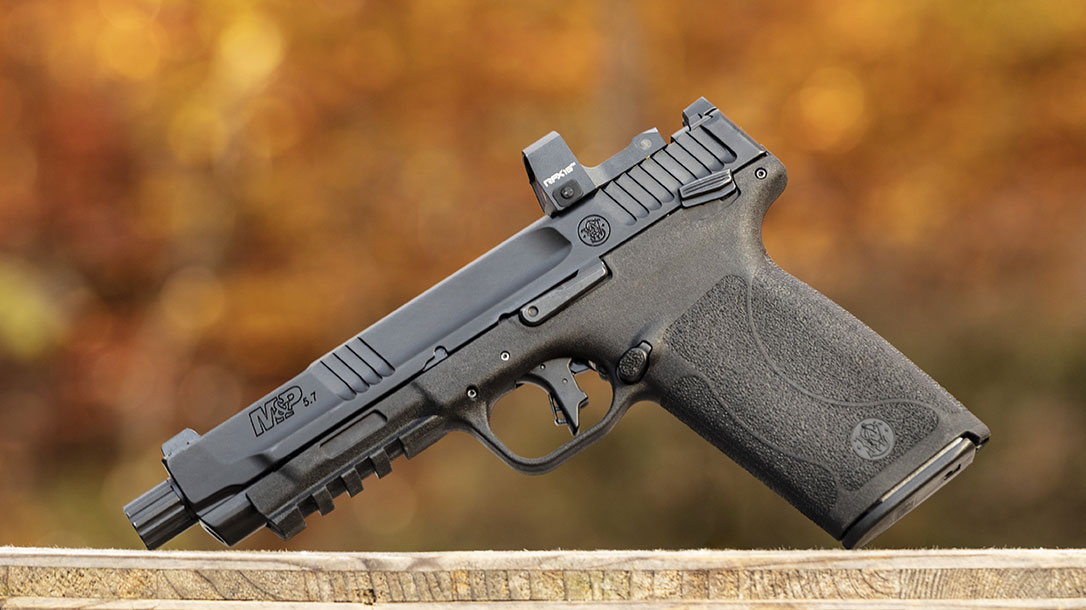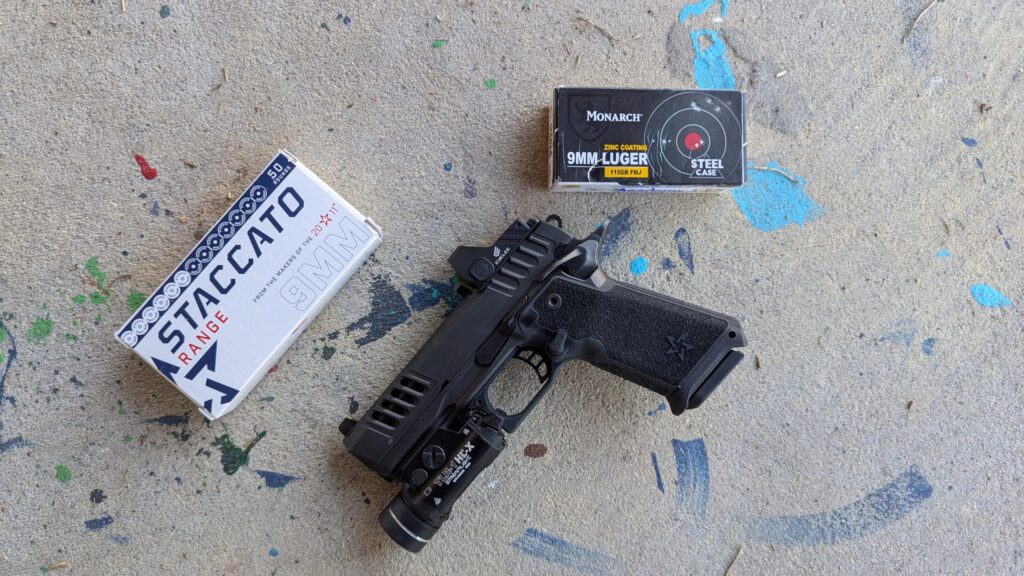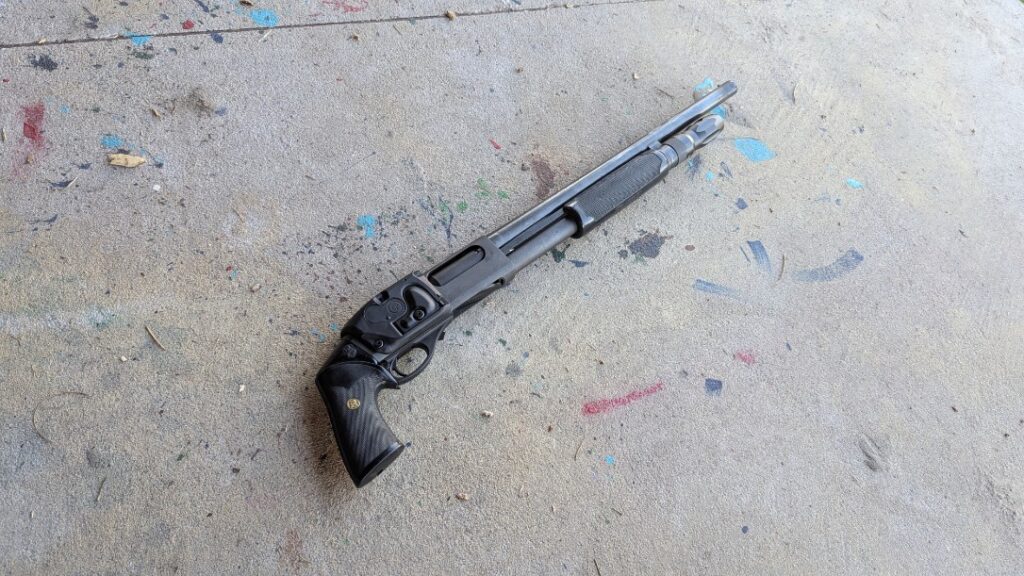As we develop as a shooter, recoil changes from a thrill ride to inconvenience. Kick and muzzle flip are fun at first. But as time goes on, we realize that these things get in the way of what matters most—our split and transition times. This doesn’t mean that we’re going to revert to .22 LR for the rest of our lives, as downrange energy is still a major concern. This is where the 5.7mm comes in, and Smith & Wesson has an M&P 5.7 that fits the bill perfectly.
The Smith & Wesson M&P 5.7
In the 90s, FN answered the call with its 5.7x28mm cartridge and the accompanying pistol built to fire it. Reserved to fan lore for close to three decades, both the cartridge and firearm never truly caught on because of their limited availability.
However, that has started to change, and the U.S. market is finally seeing the 5.7 as a legitimate ammo choice. Mainly because Fiocchi has been able to flood dealer shelves with it.
Advertisement — Continue Reading Below
With a newfound trust in ammunition availability, manufacturers started to breathe life into their 5.7 designs once again. The latest comes from Smith & Wesson. On paper, the new pistol is an extension of their famed M&P line. However, once you get your hands on one, it becomes clear that it is anything but.
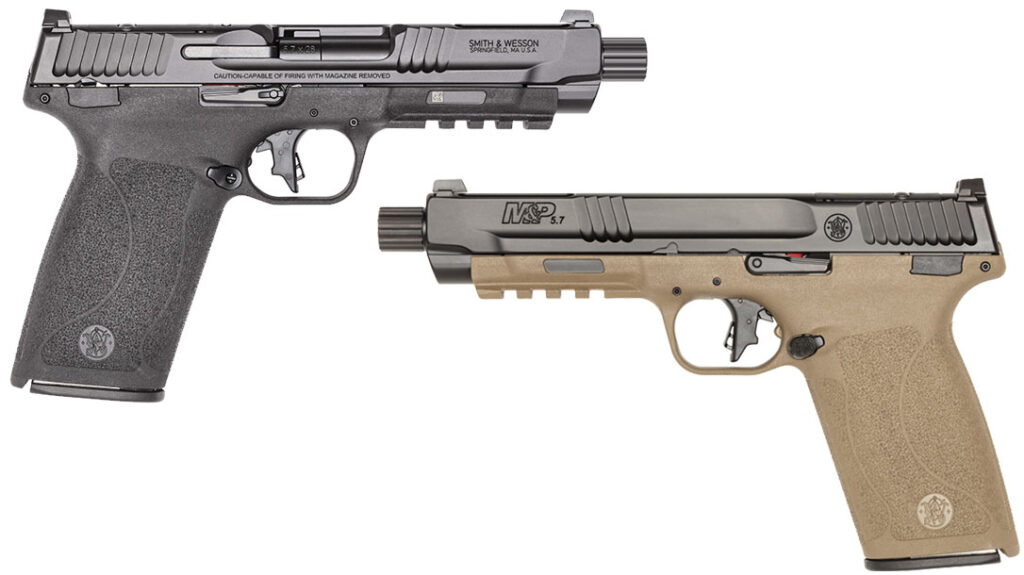
M&P DNA
With this new handgun being called the M&P 5.7, naturally, a few features were carried over. The most obvious would be the polymer frame with its signature grip contour and texture.
Advertisement — Continue Reading Below
However, because the cartridge is long, the grip is a bit on the wide side to accommodate the oversized magazine. This is compensated for by its thinness. For these reasons, this model does not come with interchangeable backstraps, as few hands will find that this area needs to be extended.

The next most notable family characteristic is its straightened and widened trigger, featuring the newer bow safety in place of the original hinge. Like other late-model M&Ps, it too exhibits a crisp break and rapid reset.
Advertisement — Continue Reading Below
This is extraordinarily valuable on a gun that doesn’t leave the target under recoil. Using a Lyman Digital Trigger Scale, I measured a consistent breaking point at 3 pounds, 10 ounces, which is exceptional for a production pistol.
Although this serves as an excellent standalone safety, Smith& Wesson also offers the 5.7 with an ambidextrous thumb safety should you prefer additional assurance. This would complement the ambidextrous slide stop and reversible magazine catch for the left-handed shooter. So, if you are a southpaw, there is no need to make this additional control a sticking point.
Running an Optic on the M&P 5.7
Depending on when you started working with M&Ps, the slide cut on the 5.7 will either be an improvement or just standard equipment. I think it’s more important on this pistol than any other chambering because the lack of recoil makes it easy to keep the dot within the optic’s window while the gun fires.
Advertisement — Continue Reading Below
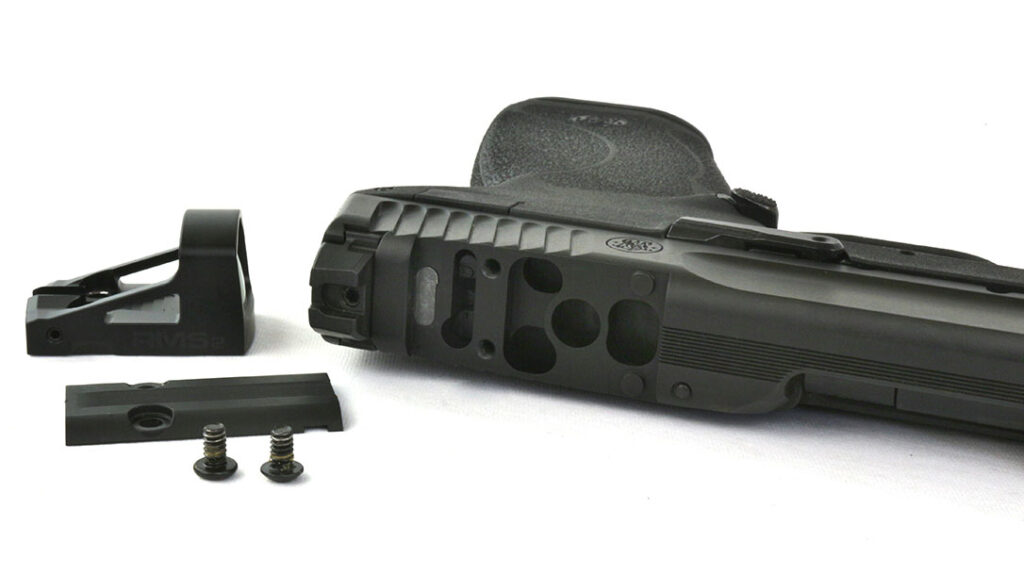
This is one of the hardest transitional points for shooters switching from irons to glass. So, this setup is an optimal bridge between the two sighting systems.
By removing the cover, I found that this pistol could directly accept a Shield RMS2 sight. The RMS2 is an excellent choice for something firing this cartridge. The 5.7’s manageability means that an oversized optic window wouldn’t be necessary to track the dot between shots. This allows for the use of streamlined red-dot units that keep the overall silhouette of the gun sleek and carry less of a chance of impeding slide function.
Advertisement — Continue Reading Below
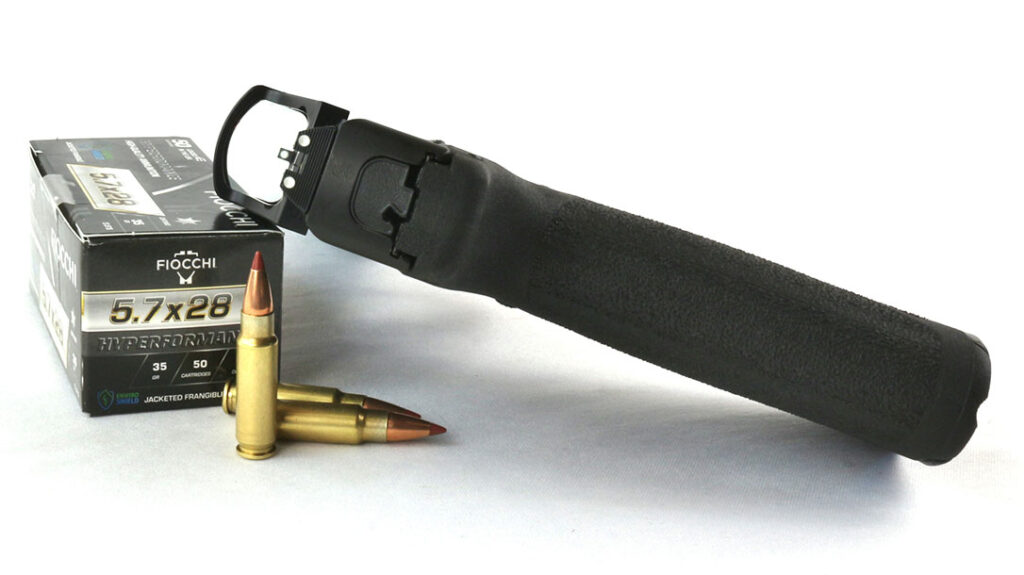
Besides, its idiotproof “always-on” technology, coupled with auto light sensing, flattens the learning curve. This lets me get to the range without having to read up on anything other than zeroing, which is also easy guesswork.
Lastly, I was a big fan of how low it sat. It allowed me to run standard sights and keep the presentation that I’ve drilled into a habit.
Advertisement — Continue Reading Below
TEMPO Timing
One aspect that is refreshingly new on the 5.7 is the TEMPO system. Although this cartridge might be easy on the wrist, its high operating pressure is sadistic to actions. Therefore, a delay system must be put in place to keep the breech from cracking open when the pressures are at their highest.
There are a few different ways to do this, but nothing is more effective than gas operation. The only trouble is the space requirements for all the components that comprise conventional designs.
Smith & Wesson realized that by doubling up on the barrel, this could be accomplished in a way that’s smaller than previous systems. Since the bore diameter is only .224 inches, this leaves enough room to sleeve the barrel itself with a shroud.
Advertisement — Continue Reading Below
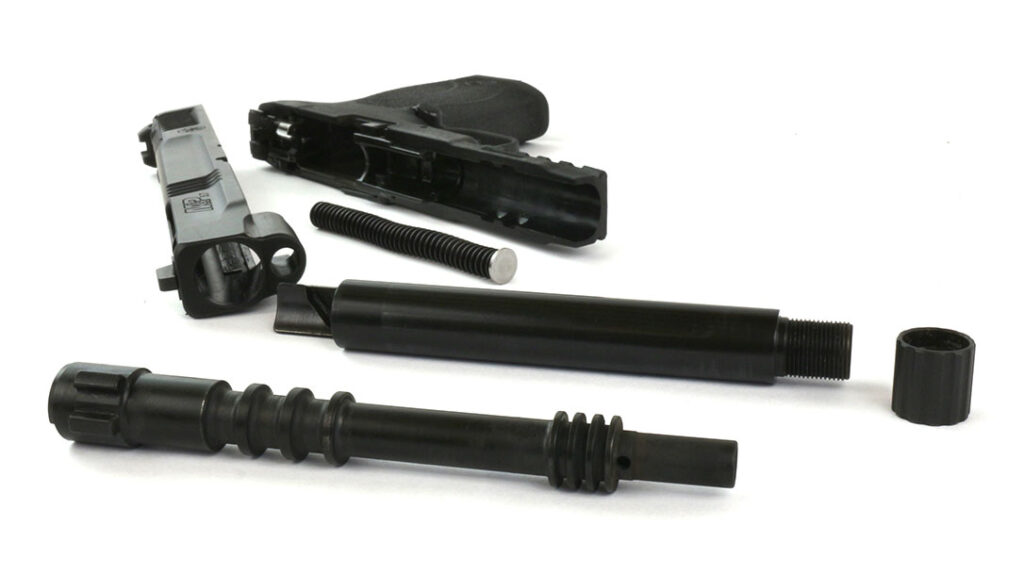
The barrel then rotates within this shroud after the bullet passes the gas port drilled into the barrel, unlocking a pair of lugs and allowing the fired case to be extracted and ejected. All the while, this rotation works to soak up some of the felt recoil, adding to the pistol’s overall shootability.
Firing With Fiochi
Fiocchi was gracious enough to send us all three of its current 5.7 loads for our testing, each with unique properties. The 35-grain ammo is built with a frangible projectile, opening closer-range practice on steel targets. This is new to me, for sure.
Advertisement — Continue Reading Below
With a few hundred of these at my disposal, I also decided to pack a pair of Caldwell IPSC targets. The company’s 40-grain load features a tipped hollow-point projectile, making it ideal for long-range engagements.
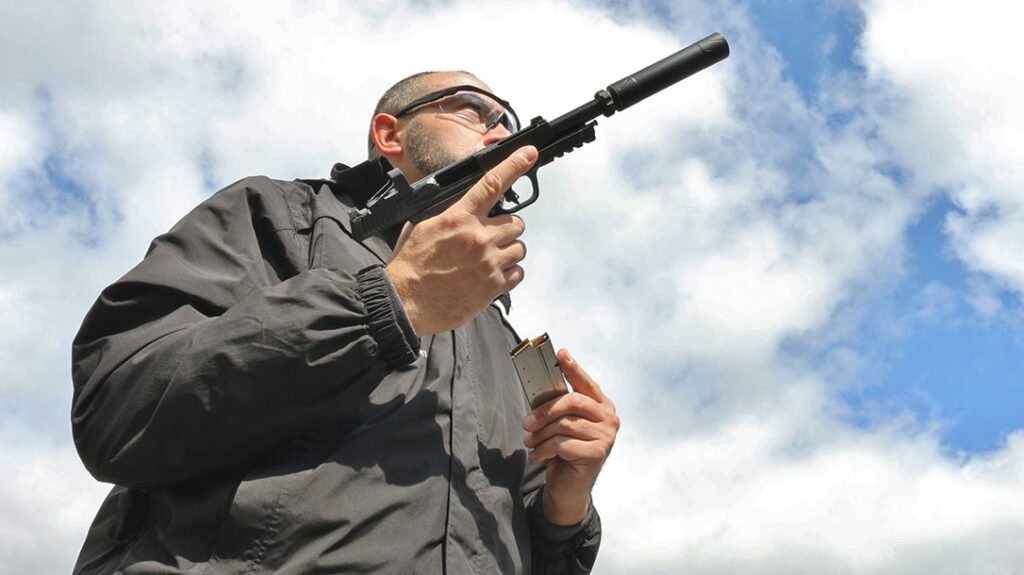
Lastly, the 62-grain variant is loaded to subsonic velocities, making it perfect for suppressed shooting. With that in mind, I screwed a Banish 22 can to the end of my test pistol and was both surprised and delighted that it did not obstruct either sight picture. With the gun now fully kitted out, I set out to see how she ran.
I started by zeroing the pistol at 15 yards with the 40-grain ammunition. My initial thoughts were that this gun performed exactly as advertised. It felt like shooting a .22 LR, and with the can attached, it wasn’t too far off from that report either.
Stealing the term “Hollywood quiet” from Silencer Central best describes what that report was reduced to when using the subs. Honestly, that phrase even takes away from this setup. Movies usually use a chirp or whistle effect to simulate what they think a suppressed firearm sounds like.
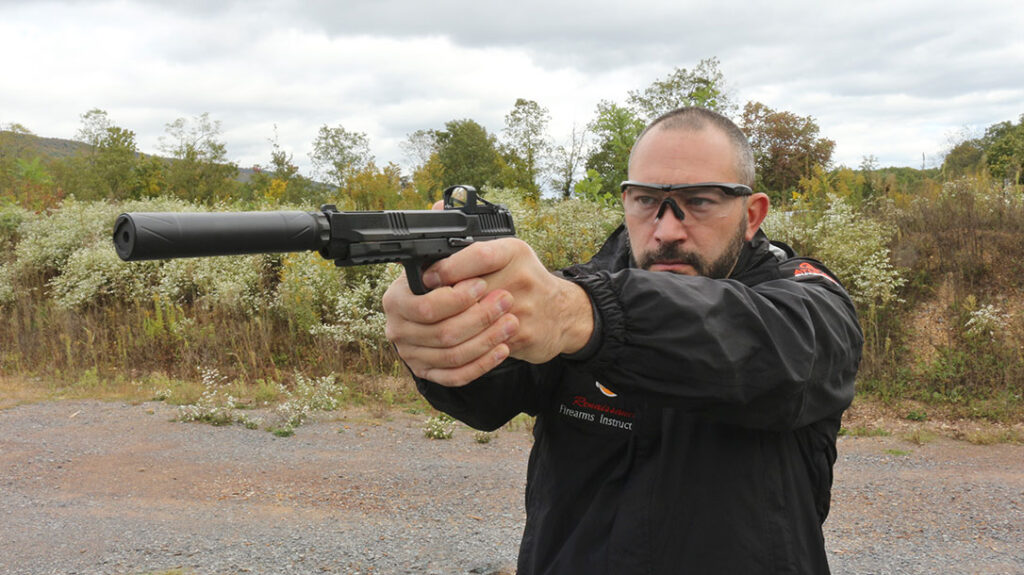
Firing subsonic 5.7 through the Banish 22 was even quieter. So much so that when I pulled the trigger, I was able to hear the internal hammer drop as well as the complete cycling of the action. As I started with paper targets, the only real noise I experienced was the rounds crashing into the dirt after passing through the cardboard backer.
Ringing Steel
I needed to generate my own noise. So, I swapped in the steel targets and addressed them with a combined 45 rounds or two magazines worth 5.7. Landing two hits in less than half a second was no trouble at all. Likewise, double taps on each target were had in as little as 0.76 seconds.
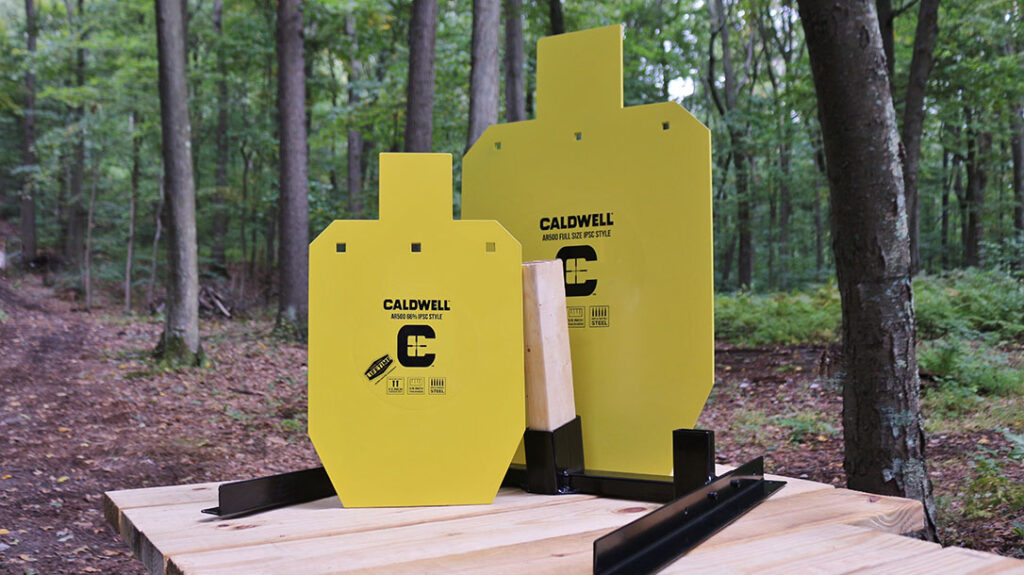
Something S&W doesn’t disclose with the 5.7 is that you’re going to attract a bit of attention. As I wrapped up my final leg of testing, I was joined by a buddy and his 11-year-old son. They had heard the barrage of tings and caught a glimpse of what I was shooting.
Always interested in others’ opinions, I let both send some rounds downrange at a 66% Caldwell target that I had now moved out to 100 yards. Dad put about half a magazine’s worth into the center of the steel—with no hold over, mind you.
A touch recoil shy, I offered it to his son, knowing he’d enjoy shooting it. Leaving him the last five shots, he put three of them onto the plate. Not bad for the second time he’s ever shot a pistol.
The Upshot
I wrapped things up with a quick field strip and oiling of the M&P 5.7. It was a bit dirtier than other pistols I fired that day. However, I can easily attribute that to the higher round count as well as the suppressor use.
Nonetheless, it ran without any issues, and I have no reason to believe it wouldn’t continue to do so for another several hundred rounds. Smith & Wesson has done an excellent job of bringing another 5.7 option to the American market. And at an MSRP of $700, it’s an easy buy as well.
For those who are on the hunt for something in the ultra-capacity niche that is easy to shoot and ridiculously accurate, this is the gun for you. Just don’t expect the thrill ride of something nearly flying out of your hands when you press the trigger.
For more information, please visit Smith-Wesson.com.
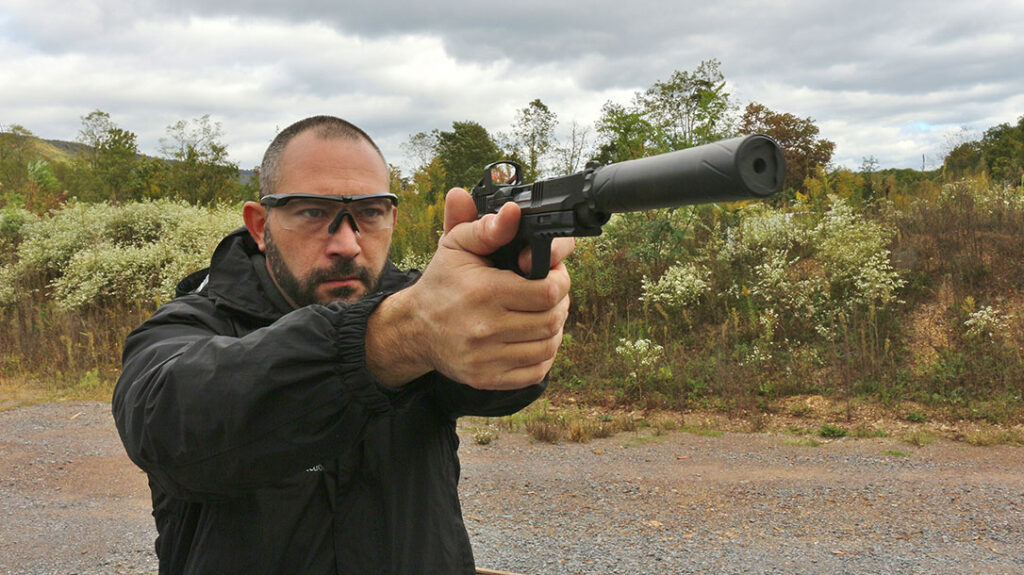
Smith & Wesson M&P 5.7 Specs
| Caliber | 5.7x28mm |
| Barrel | 5 inches |
| Overall Length | 8.5 inches |
| Weight | 26.7 ounces (empty) |
| Grips | Textured polymer |
| Sights | White-dot front, adjustable rear |
| Action | Semi-auto |
| Finish | Matte black |
| Capacity | 22+1 |
| MSRP | $700 |
Performance
| LOAD | VELOCITY | ACCURACY |
| Fiocchi Hyperformance 35 Frangible | 1,730 | 1.25 |
| Fiocchi Hyperformance 40 HP | 1,676 | 1.89 |
| Fiocchi Range Dynamics 62 FMJ | 1,001 | 2.14 |
Bullet weight measured in grains, velocity in feet per second and accuracy in inches for best five-shot groups from 15 yards.
